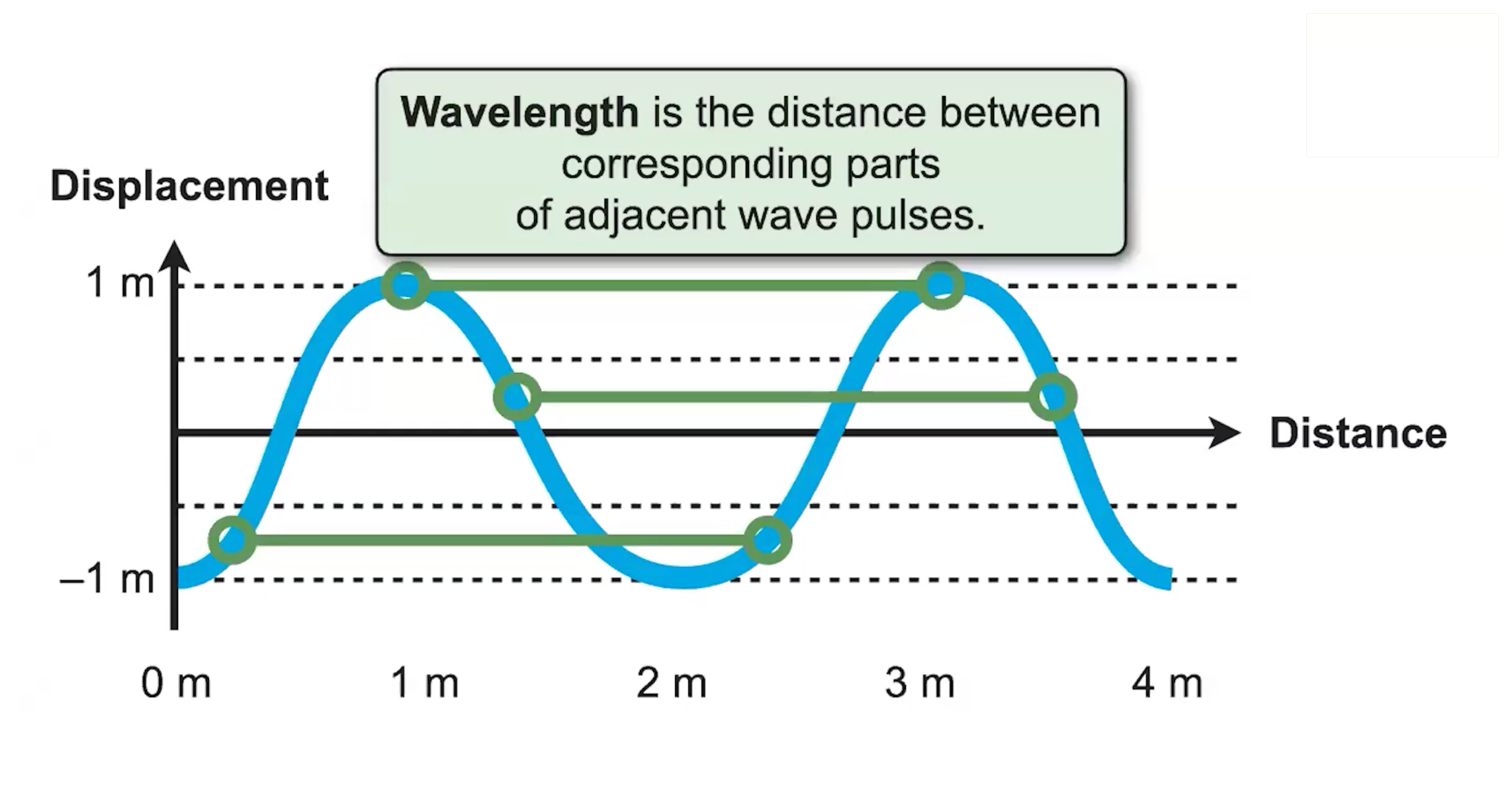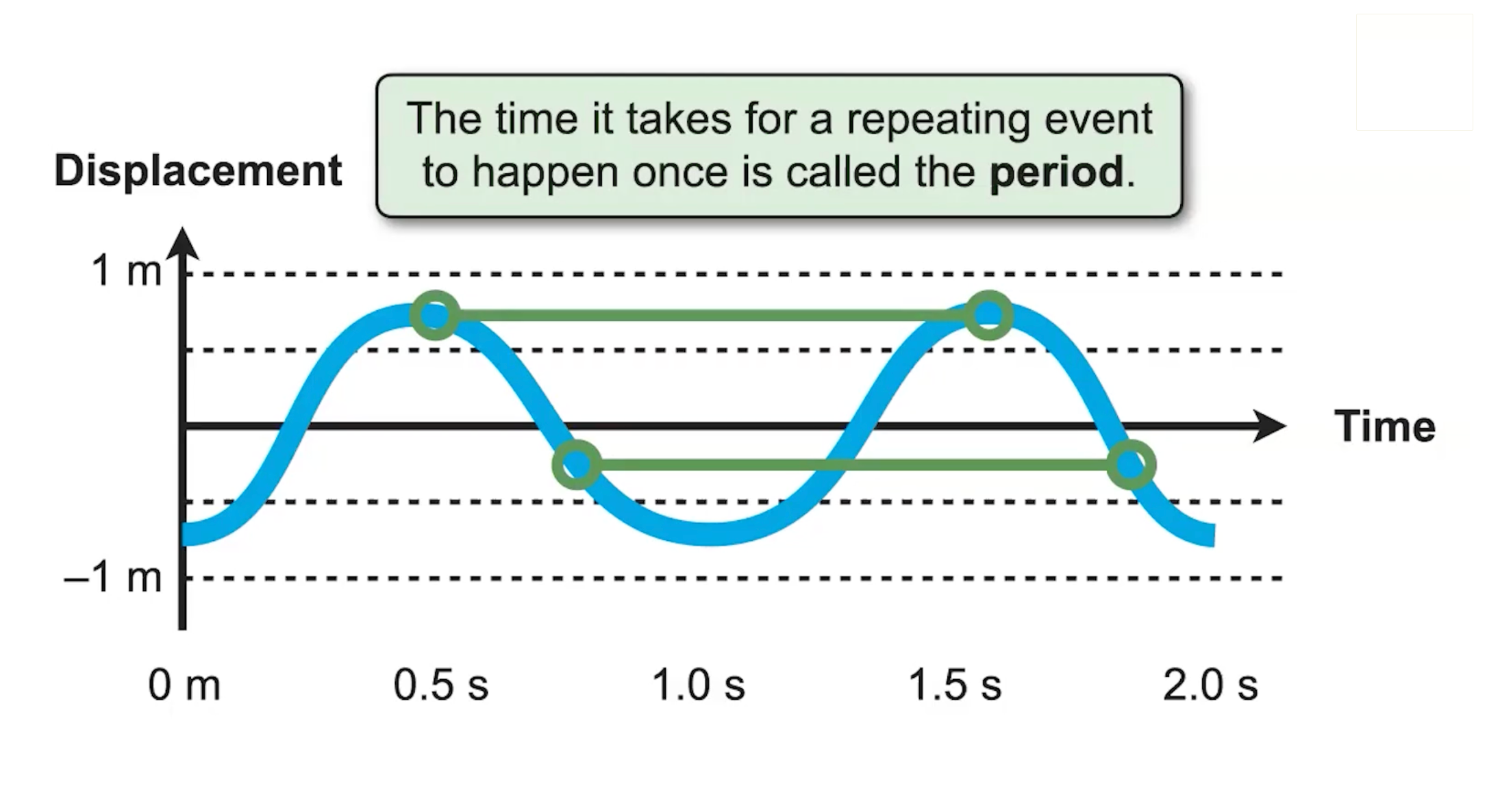Approaching Waves
- Period (): the number of times a wave/oscillation happens every second
- Frequency: the number of seconds it takes for one wave/oscillation (also notated as )
There are two main ways we can look at a wave:
- Looking at the whole wave at one moment in time
- Looking at a single point at all moments in time
These distinctions will essentially change what different patterns and data on the wave graph will actually mean. For example, in the below table, in the graph, the distance between two corresponding points represents the wavelength; however in the graph, the same space represents the period:
 |  |
|---|
Wave Speed
From 14.1 — Properties of Wave Pulses and Waves, we know that the speed of a wave depends on the medium and the type of wave moving through the medium. A wave’s frequency is a property of the wave, and the wavelength depends on frequency and speed. This is represented by the following formula:
Mathematical Representations of Waves
Waves can be represented by the following mathematical representation: where:
- is the y-axis variable
- is the amplitude
- is the period or which is the wavelength
- is the x-axis variable (distance when and time when )
- Keep in mind that can be used interchangeable with , and